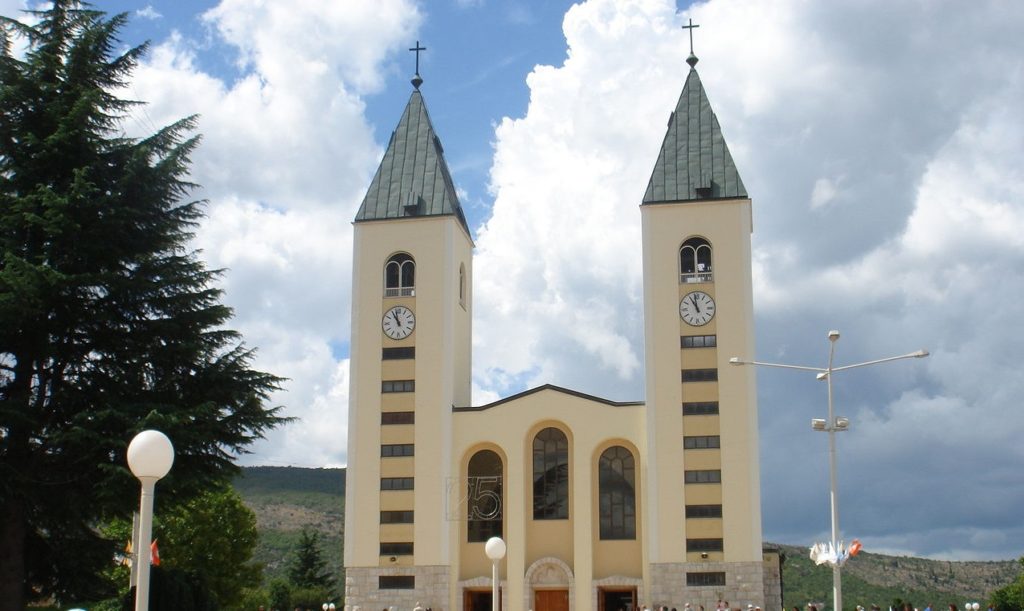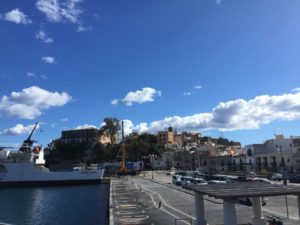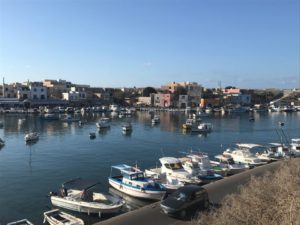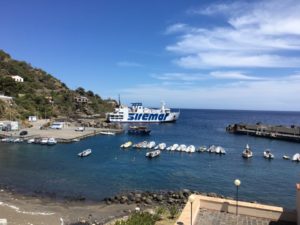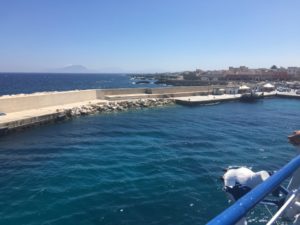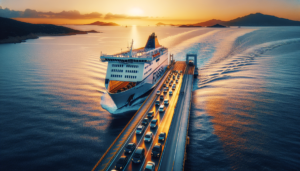Where is Medjugorje located
Medjugorje, a pilgrimage destination and world center of prayer since, in 1981, some young people claimed to see apparitions of the Virgin Mary periodically, is located in the Herzegovina-Narenta Canton of the Federation of Bosnia and Herzegovina. We are in the Western Balkans, a short distance from the coast of Croatia and the only, and small, Bosnian-Herzegovinian outlet on the Adriatic Sea. The climate of the area is Mediterranean.
This village, part of the municipality of Citluk, is located between Mount Krizevac and Podbrdo, a hill of Mount Crnica of just over 500 meters called the Hill of Apparitions: the path that leads to the top, where there is the statue of the Queen of Peace, is now wide and free of obstacles, and it has been adorned with bronze panels illustrating the joyful and painful mysteries of the Rosary, created by the artist Carmelo Puzzolo. The reliefs representing the Via Crucis along the path on Mount Krizevac, up to the concrete cross built in 1934 on the top, are also by the same sculptor. The church of San Giacomo, seat of the local parish, is better known as the Sanctuary of the Madonna della Pace.
Why get to Medjugorje by ship
It is advisable to arrive in Medjugorje starting by ship and continuing by road (bus or car) because from Italy it is the most convenient solution. If you want to travel by car, you can still do it by embarking the car on the ferry, and thus avoiding a road trip of 1000 kilometers. As for the journey by plane, the closest airport to the destination, from which it is about 25 kilometers away, is Mostar, for which there are no direct flights departing from Italian cities (it is necessary to make at least one stopover) and prices are almost never low, as is the case for flights to Split and Dubrovnik airports.
Ancona – Split ferry
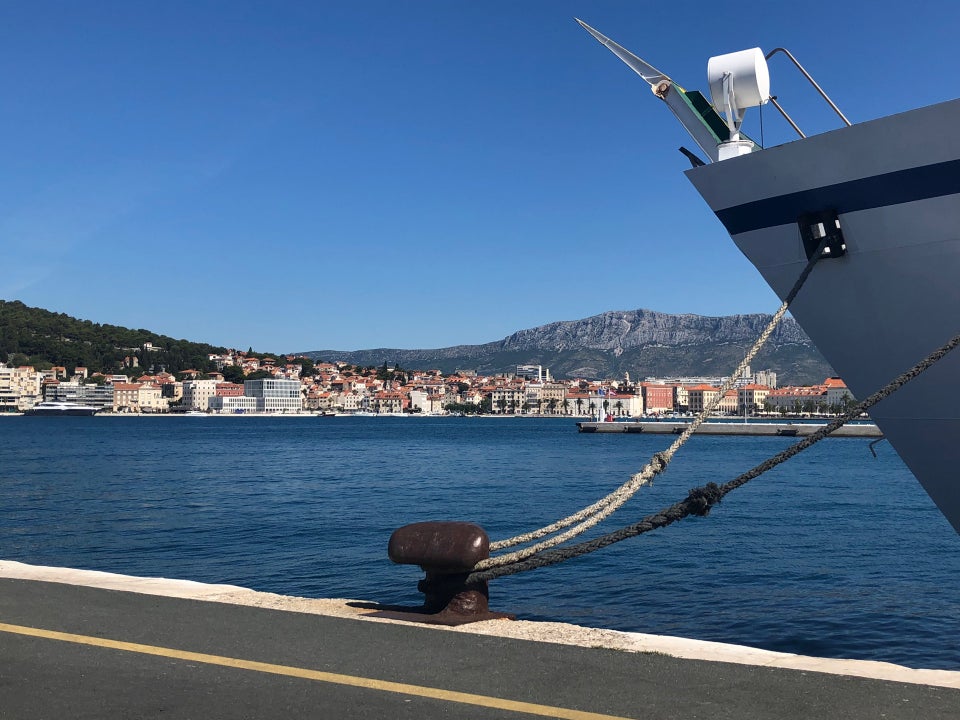
With the ferries operating on the Ancona – Split route it is possible to arrive, from the capital of the Marche region, on the coast of Croatia, even with your own vehicle. There are several weekly departures in the high season, while in the low season two trips per week are guaranteed. The departure is usually made at 19:45, arriving at 07:00 the next morning. You can travel on deck, seat, berth or cabin.
How to get to Medjugorje from Split
From Split, the main center of Dalmatia, there are two buses a day to Medjugorje, which is reached in three hours and forty minutes in the morning and in two hours and forty-five minutes in the afternoon. The route is about 185 kilometers long. Those traveling by car can head to their destination by continuing to Makarska, crossing the Bosnian border and continuing to Vrgorac and Ljubuski.
Bari – Dubrovnik ferry
The ferries that cross the Bari – Dubrovnik route are active from mid-June to the end of November. From the capital city of the Puglia region it is possible to disembark in the Dalmatian port city of southern Croatia even with a car in tow. Departures, biweekly, are usually made at 21:00, arriving at 08:00 the next morning. The crossing can be spent on deck, armchair or cabin.
How to get to Medjugorje from Dubrovnik
From Dubrovnik, the largest city in southern Dalmatia, there is a bus that leaves in the afternoon to arrive in Medjugorje after three hours and forty-five minutes. The distance between these two places is 143 kilometers. Those who have disembarked by car must go towards Ljubinje and pass through Stolac; once you enter Bosnia you have to continue to Mostar.
Documents required for the trip
For those traveling to Bosnia-Herzegovina, whose accession process to the European Union is still being completed, from Italy, a passport or identity card valid for expatriation is required, with at least three months of residual validity.
Those arriving by car are required, in addition to the driving license and the vehicle registration document, the international insurance certificate, to be printed by the insurer in the original version. Anyone who drives a non-owned car must have a proxy (in English) from the owner with an authenticated signature.

